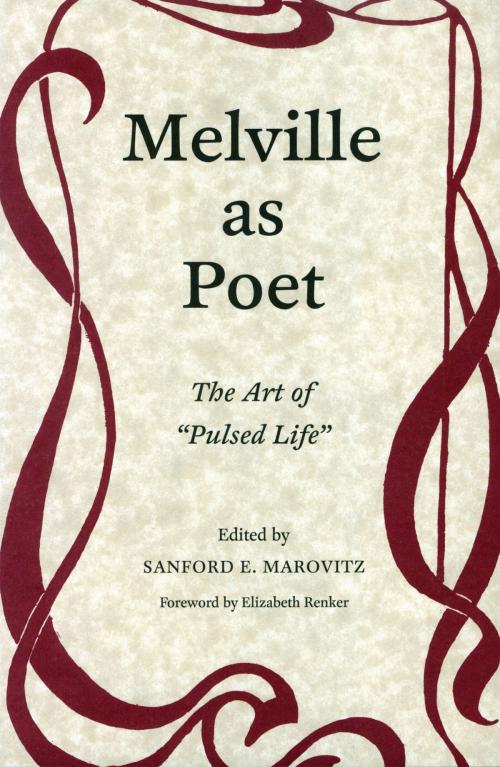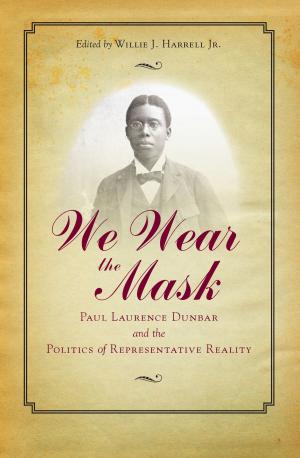Melville as Poet
The Art of Pulsed Life
Fiction & Literature, Literary Theory & Criticism, Poetry History & Criticism, American| Author: | Sanford E. Marovitz | ISBN: | 9781612777061 |
| Publisher: | The Kent State University Press | Publication: | November 1, 2013 |
| Imprint: | The Kent State University Press | Language: | English |
| Author: | Sanford E. Marovitz |
| ISBN: | 9781612777061 |
| Publisher: | The Kent State University Press |
| Publication: | November 1, 2013 |
| Imprint: | The Kent State University Press |
| Language: | English |
Herman Melville’s literary reputation is based chiefly on his fiction, especially Moby-Dick and Billy Budd. Yet he was a gifted poet, as evidenced by his collection of Civil War poems, Battle-Pieces and Aspects of the War (1866), and by his epic-length poem, Clarel (1876), a symbolic rendering of his pilgrimage of 1856–57 to the Holy Land, as well as the two small volumes of poems he published before his death in 1891. Melville as Poet: The Art of “Pulsed Life” opens with an introduction by Sanford E. Marovitz and the late Douglas Robillard on Melville’s conception of poetry as a literary form. The essays begin with Dennis Berthold’s study of how Melville’s observations of art at New York’s National Academy of Design in 1865 are reflected in Battle-Pieces, and Mary K. Bercaw Edwards follows, describing how the nautical combat of the ironclads Monitor and Merrimack became a subject of wide contemporary interest in popular culture. The next three essays focus on Clarel. Peter Riley explains how Melville’s familiarity with the congestion of Lower Manhattan as a customs inspector influenced his descriptions of Jerusalem. Gordon M. Poole then discusses notable subtleties in Ruggero Bianchi’s Italian translation of the poem, and Robert R. Wallace reveals how selected Biblical prints and other graphics familiar to Melville affected the poet’s descriptions in Clarel. Melville’s John Marr and Other Sailors (1888) is then examined by A. Robert Lee, who emphasizes the themes of memory and death in that small volume, and Sanford E. Marovitz illuminates Melville’s method of unifying Timoleon, Etc. by using contrast to bind, not separate. Vernon Shetley compares Melville’s “Pausilippo” thematically with Shelley’s “Julian and Maddalo,” and Michael Jonik explores “The Archipelago” for insights into Melville’s experimentation with imagery and form. Finally, Wyn Kelley, Clark Davis, and Robert Sandberg imaginatively examine and reassess poems Melville left unpublished at his death. Melville as Poet is a valuable collection of new and critical scholarship that aims to encourage more and deeper study of Melville’s art of poetry.
Herman Melville’s literary reputation is based chiefly on his fiction, especially Moby-Dick and Billy Budd. Yet he was a gifted poet, as evidenced by his collection of Civil War poems, Battle-Pieces and Aspects of the War (1866), and by his epic-length poem, Clarel (1876), a symbolic rendering of his pilgrimage of 1856–57 to the Holy Land, as well as the two small volumes of poems he published before his death in 1891. Melville as Poet: The Art of “Pulsed Life” opens with an introduction by Sanford E. Marovitz and the late Douglas Robillard on Melville’s conception of poetry as a literary form. The essays begin with Dennis Berthold’s study of how Melville’s observations of art at New York’s National Academy of Design in 1865 are reflected in Battle-Pieces, and Mary K. Bercaw Edwards follows, describing how the nautical combat of the ironclads Monitor and Merrimack became a subject of wide contemporary interest in popular culture. The next three essays focus on Clarel. Peter Riley explains how Melville’s familiarity with the congestion of Lower Manhattan as a customs inspector influenced his descriptions of Jerusalem. Gordon M. Poole then discusses notable subtleties in Ruggero Bianchi’s Italian translation of the poem, and Robert R. Wallace reveals how selected Biblical prints and other graphics familiar to Melville affected the poet’s descriptions in Clarel. Melville’s John Marr and Other Sailors (1888) is then examined by A. Robert Lee, who emphasizes the themes of memory and death in that small volume, and Sanford E. Marovitz illuminates Melville’s method of unifying Timoleon, Etc. by using contrast to bind, not separate. Vernon Shetley compares Melville’s “Pausilippo” thematically with Shelley’s “Julian and Maddalo,” and Michael Jonik explores “The Archipelago” for insights into Melville’s experimentation with imagery and form. Finally, Wyn Kelley, Clark Davis, and Robert Sandberg imaginatively examine and reassess poems Melville left unpublished at his death. Melville as Poet is a valuable collection of new and critical scholarship that aims to encourage more and deeper study of Melville’s art of poetry.















